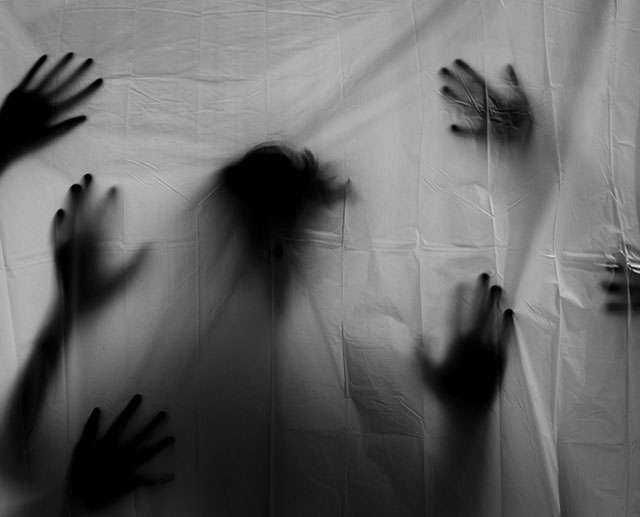With Halloween just around the corner, we thought it might be fun to put together a short list of some of the most haunted places in Barcelona. This is by no means a complete tally, but it gives you some idea of the spooky and spine-chilling tales that courses through the veins of this ancient medieval city, where summary executions and witch hunts were once a part of daily life. These have indeed left their own occult scar on the Catalonian capital.

The singing monks of Boqueria Market

The music seemed to come from everywhere and nowhere, at the very same time. It seeped out of the woodwork, stole mysteriously across the ancient stone floor, and seeped unbidden into the veins of the old monk that stood listening in the shadow of the doorway. It was past midnight and all the other monks had retired to their chambers, for meditation and prayer and to repose themselves before the morning ablutions.
It was this monk and this monk alone that heard the earie music, and he didn’t like what he heard. There was no one in the monastery that could be making this music – no one living, at least – and the music itself did not sound of this world. Or was that only his sleep-addled brain playing tricks? The words sounded too old. The music that should have been soothing grated too harshly.
A chill raced up the old monk’s spine. Fearfully the monk took one tentative step forwards and then another. On his third step he moved out of the shadows and that is where he saw the most frightening sight of his life, framed in a single shaft of moonlight.
The two front pews of the small chapel were full, but not with the living and breathing monks of this monastery. The pews were taken up entirely of men devoid of flesh and sinew, where only bones clattered together in some grotesque charade of animated life. The fleshless jaws of these skeletal worshippers moved in unison as the eerie echoes of a strangely familiar song reverberated around the chamber.
The old monk stood there, mesmerised, rooted to the spot, seemingly unable to move his feet, even though he badly wanting to. It was only when one of the singers in the front row looked up from its hymn sheet, and turned a gaunt face towards the onlooker, that the monk was roused from his revery. This skeletal figure raised a boney hand and pointed a trembling digit, mouthing a single word.
What that word was, however, has been lost in the chasms of history. For no sooner had the skeleton raised its single hand than the monk fled. He fled back to his chambers and roused his religious brothers. He didn’t know what to do. He was terribly afraid for he thought he knew why this spectral crew might have paid the monastery a visit. These were the disembodied spirits of the monks that had lived within the walls of this holy place in bygone days. Pious men. Devoted men. Men that would have gladly sacrificed themselves for the Heavenly Father. Men, in other words, quite unlike those that now occupied the Discalced Carmelite Monastery of Sant Josep.
Silently all of the living monks returned to the chapel to watch their ghostly ancestors finish their hymn, and the same sense of foreboding and fear fell upon them as upon the first monk that had stumbled into the macabre scene.
Over the years these monks had become lax in their ways of worship, even going so far as to say that praying was not necessary on the date of their patron saint, Our Lady of Carmen. They were now about to pay the price.
When the singing was over and the skeleton choir stood up, the living monks silently stepped forwards to lead these undead entities back to the crypt from which they had risen. All but one of the tombs was open. With no noise whatsoever the skeletons slid back into their stone beds, which should have been their final resting place.
The following morning, one of the monks was found dead. This was the only monk to have remained devoted to the old ways, the only monk that had fought to keep the religious tradition of the monastery alive. His brothers buried him in the customary way… and thought no more about what had transpired.
Ten days later the monastery went up in flames, caused by a riot that had consumed this part of the city.
All of the surviving monks died in the blaze – and the memories of the past were swept away. The Boqueria Market was extended to cover where the monastery had stood. But the wondering souls of the monks have never been fully laid to rest. Every year, on the evening of July 15, which is the Eve of Our Lady of Carmen, you can hear ghostly singing creep through the dark passages – if you listen hard enough. You may even be able to catch a glimpse of one of the decaying bodies of the tormented monks, who have been unable to secure passage out of this world.
The curse of Liceu Theatre
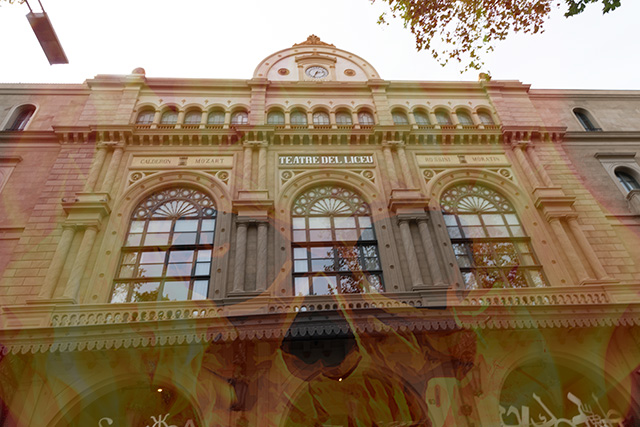
The grounds upon which the Liceu Theatre now stands are steeped in blood. Blood and suffering and torture. For this is the place that, long before the present building was constructed, many-a-man was led to his death at the swift hands of the King’s Justice.
Execution methods included being burned at the stake, decapitation and strangulation. These were methods that were certain to inflict upon the condemned man untold suffering, and a better-than-average chance that the soul would not be able to rest in the afterlife – especially if the soul in question was innocent of any crime.
These were the ethereal spirits condemned to remain behind within the mortal realm as all their loved ones left them – desperate to conclude whatever unfinished business they still have on this plane.
These are the restless spirits that continue to bring misery and tragedy to the Liceu Theatre, which was unwisely built upon the site of the old execution grounds.
In 1861, just fifteen years after the building was completely, it was consumed by fire.
In 1893, after it had been rebuilt, it suffered another tragedy when dozens of people were killed in an anarchist attack. The man that threw the two bombs – one of which failed to explode – was later hung.
In 1994, the theatre went up in flames yet again and was subsequently rebuilt.
This is not a lucky building, and one can only wonder what next grim tragedy will befall it.
The poltergeist at 43 Francesc Giner
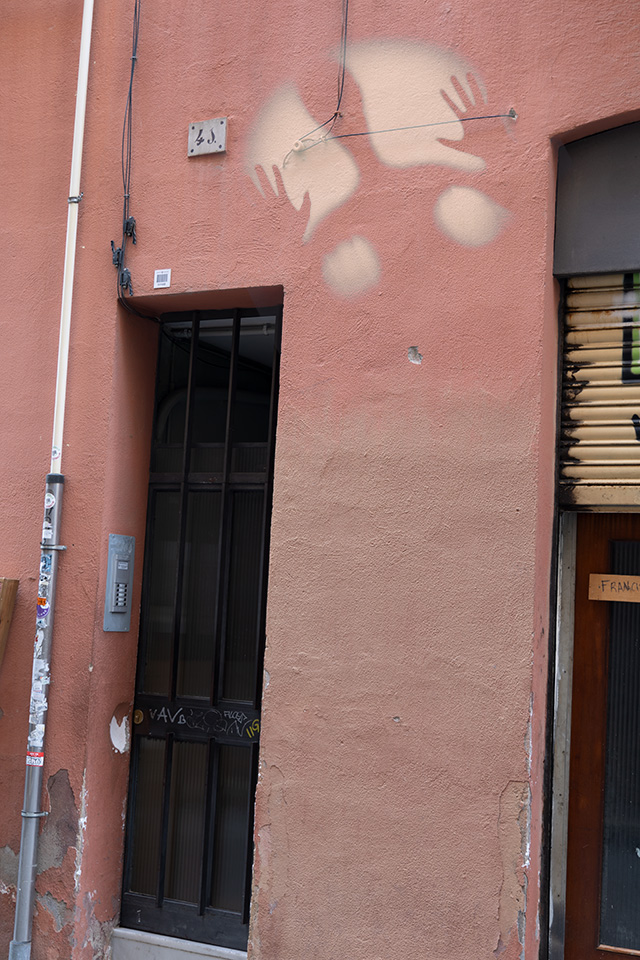
The events that occurred in the early hours of February 10, 1935 would change the Montroig i Mendoza family forever – and serve as the first documented case of poltergeist activity in this city.
It can have been no more than 2 o’clock when the banging started. There were knocks and crashes coming from the very walls of the house itself, as though some furious demon was trying the prison in which it now found itself. This may, in hindsight, not have been too far from the truth.
Unsurprisingly this tremendous cacophony of otherworldly noises soon woke the sleeping family, who huddled together in terror as locked drawers were flung open, and wardrobe doors swung back on their hinges. The security guard, together with the night watchman, carried out an inspection of the building. The poltergeist activity, as journalists would subsequently label it, did not stop. If anything it became more frenzied. The men that investigated it were at a loss to come up with any kind of explanation.
The following day, on the night of February 11, the phenomena repeated itself – again with great force. The owner of the apartment reported the incident to the local police station, but officers who attended the scene were as stumped as those that had investigated during the previous night: no one seemed to be the orchestrator of these noises that were leaving everyone in the building so terrified.
This was when the press started becoming interested in the case and carried out their own investigations into what might have been causing the strange occurrences. Again no convincing explanation appeared forthcoming.
There are many testimonies to be found about what occurred during those perturbing days in 1935. Many of these were narrated by neighbours, who explained to the police that they very often observed white shadows drifting through the passageways, and chairs and clocks moving without anyone’s help.
People were quick to link this phenomenon to the presence of a distressed spirit that had been unable to leave this world when its mortal body died. Priests were consulted, exorcisms were attempted, but nothing seemed to calm the violent restlessness of this ghost.
At the time of the activity, the youngest child of the family was very sick. Some para-psychologists at the time suggested that many of these phenomena could have been linked to this teenager, with an unknown ‘psychomechanism’ that caused these strange events.
The disturbance all ended when the tenants of the building, including the Montroig family, wisely chose to find a quieter (and presumably less haunted) place to live.
So was the poltergeist simply haunting one of the tenants of the building – perhaps someone that had caused its harm when it was alive? Or is the poltergeist still there, forever attached to number 43 Francesc Giner, awaiting other victims that are ripe for terrorising?
The witchcraft school of La Ribera
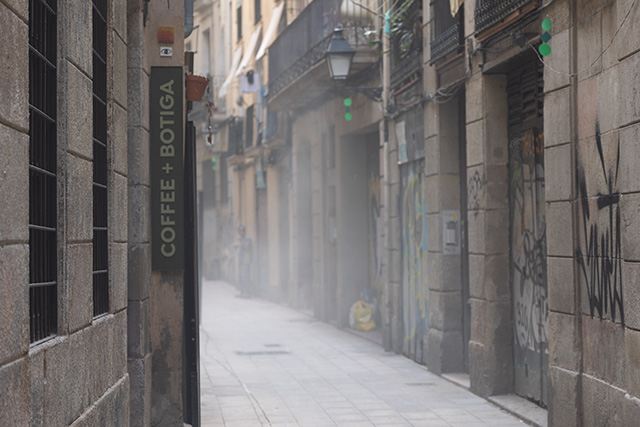
Being a witch in medieval Catalunya was dangerous, and throwing one’s lot in the Devil could come at a heavy price. Burning at the stake was not an uncommon practice for those that were suspected on witchcraft, although many of these poor individuals may well have been innocent.
A sinister young man by the name of Seca chose to walk this path, becoming a devoted disciple of the Devil himself in pursuit of greater power and wealth – and untold rewards beyond the grave.
So as to fully dedicate himself to the ways of dark magic and occult power, Seca chose to establish a secret school of witchcraft in a secluded alleyway that wends its way through the La Ribera neighbourhood of Barcelona. Here, on Carrer de la Neu de Sant Cugat, the charismatic Devil-worshipper was able to preach to his followers about the seductive lure of black magic.
One of the chilling activities of these acolytes was to steal the bones of criminals, once they had been executed and buried. These macabre relics were then used in the school’s rituals and spells, imbuing them with powers that would have been denied to them had they trod a more righteous path.
The tale of the school of witchcraft in Barcelona does not have a happy ending. As the Spanish Inquisition tightened its grip on the city, the authorities became increasingly vigilant in their hunt for suspected witches. Many were captured, subjected to brutal interrogations and ultimately burnt at the stake.
Such was the fate that awaited the witches of Carrer de la Neu de Sant Cugat. But the spectre of evil that Seca once stirred to life still hangs broodingly over this dark and lonely street.
The haunting of Barcelona’s most famous church
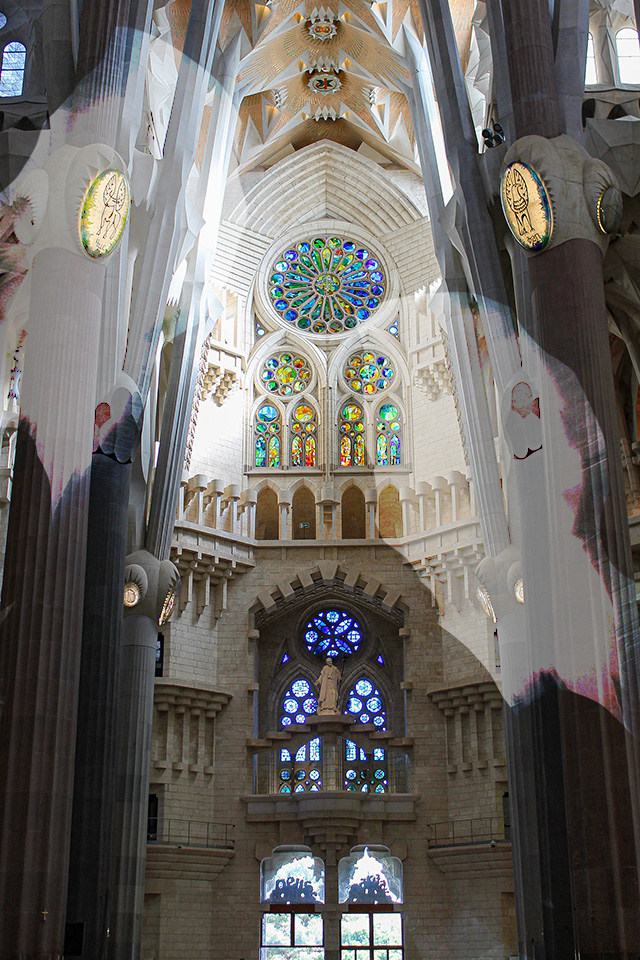
The year was 1936. Francisco Franco’s Fascist militia was advancing on Barcelona. And those opposing them desperately needed weapons.
One evening that year, the FAI, one of the groups at the forefront of the fight against the dictator-in-the-making, launched an attack on the Sagrada Familia. They set fire to Gaudí’s former workshop and then headed to the crypt where he was buried, presumably in search of weapons that may have been stored there. Gaudí himself had died 13 years earlier, after being hit by a tram.
The crypt was a disconcerting place, but the members of the FAI paid no heed. Their fear of Franco gaining power was much greater than their fear of what the dead could do to them.
That night the FAI desecrated many of the tombs, including that of Gaudí’s patron, Josep Maria Bocabella. Interestingly Gaudí’s tomb was spared from such a dehumanising fate, and members of the FAI did not touch it at all. Was this out of respect for Gaudí’s undisputed prowess as an architect? Or was it because, like them, he was a socialist who had spoken out against Barcelona’s downtrodden.
Either way Gaudí’s tomb had been left untouched, but members of the FAI had stirred something within the others.
Following the desecration of these tombs, there were several reports of mysterious blue lights hovering above the church. The police were even called to investigate on a number of occasions, but they could offer no explanation for the lights.
Was this a warning from beyond the grave – or a sign of displeasure from those whose eternal sleep had been disturbed?
Or was it simply a reminder that Gaudí’s work is still not done and Sagrada Familia remains unfinished?
The most recent date set for completion of the church is 2036, although many are skeptical that this deadline will now be met. Those spectral blue lights that gather above the building, embodying the ghostly spirits of those entombed within, may very well know the answer.
